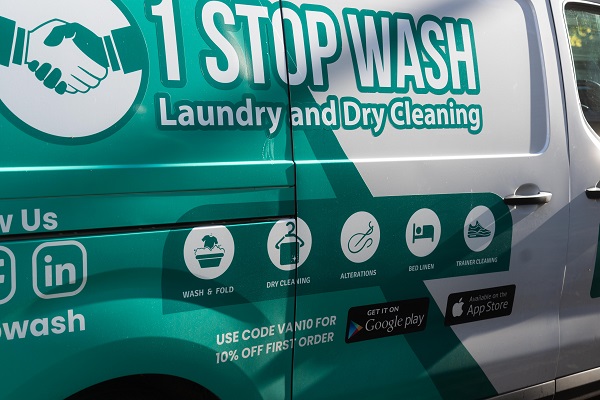
Revolutionizing Dry Cleaning with Eco-Friendly Practices
For years, traditional dry cleaning has relied on chemical solvents like perchloroethylene (perc), known for its environmental and health risks. These methods, while effective for garment care, contribute significantly to air and water pollution. Long-term exposure to these chemicals poses health hazards to both workers and consumers, highlighting an urgent need for change.
Enter the Green Revolution in dry cleaning – a transformative movement towards sustainability. This shift is driven by a growing awareness of the ecological impact of traditional practices and a commitment to preserving our planet. The revolution is characterized by the adoption of eco-friendly techniques, reducing the industry’s reliance on harmful chemicals and minimizing its environmental footprint.
This introduction sets the stage for exploring the innovative green technologies replacing traditional solvents, the benefits of eco-friendly practices, and the challenges faced in this transition. The Green Revolution in dry cleaning is not just about altering industry methods; it’s a narrative of environmental responsibility, health consciousness, and sustainable innovation. Join us in discovering how this movement is reshaping the future of fabric care and inspiring a broader commitment to a healthier planet.
The Rise of Eco-Friendly Dry Cleaning
The dry cleaning industry is witnessing a significant shift with the rise of eco-friendly technologies. These advancements are not only redefining garment care but also setting new standards for environmental stewardship.
Benefits of Green Dry Cleaning
The transition to green dry cleaning practices brings a multitude of benefits, spanning environmental, health, and economic domains.
Health Benefits for Consumers and Workers
The health benefits of green dry cleaning are profound. Traditional dry cleaning chemicals pose health risks, including respiratory issues and skin irritation. Eco-friendly alternatives offer a safer option, reducing exposure to toxic chemicals for both consumers and workers. This shift not only ensures a healthier working environment but also contributes to the overall well-being of customers who are increasingly concerned about chemical exposure in their daily lives.
Long-Term Economic Advantages
Adopting green practices in dry cleaning also presents long-term economic benefits. While the initial investment in eco-friendly technology might be higher, the reduced costs in waste management and compliance with environmental regulations offer substantial savings over time. Furthermore, as consumer preference shifts towards sustainable options, businesses that adopt green practices are likely to see increased customer loyalty and market share, ensuring their economic sustainability in a rapidly evolving industry.
Challenges and Considerations
Transitioning to eco-friendly dry cleaning methods presents several challenges and considerations that need careful navigation.
Challenges in Transitioning to Green Methods
One of the primary challenges is the initial investment required for green technology. Eco-friendly machines and solvents can be significantly more expensive than traditional equipment, posing a financial hurdle for many dry cleaning businesses, especially small-scale operators. Additionally, the shift requires training and adapting to new methods, which can be time-consuming and require additional resources.
Cost Implications for Businesses and Customers
The cost implications extend to customers as well. Initially, eco-friendly dry cleaning services may be priced higher than conventional methods, reflecting the higher operating costs. This price difference can be a deterrent for some customers, particularly in a price-sensitive market. Businesses must balance these costs while trying to remain competitive.
Addressing Misconceptions and Educating the Public
Another challenge lies in addressing misconceptions about green dry cleaning. Many consumers are unaware of the environmental and health impacts of traditional dry cleaning, and educating them is crucial. Businesses need to effectively communicate the benefits of green practices to encourage public support and acceptance. This education can help in gradually shifting consumer preferences towards more sustainable choices.

The Future of Dry Cleaning
As the dry cleaning industry evolves, the future looks increasingly green. The adoption of eco-friendly practices is not just a trend but a necessary shift towards sustainability.
Emerging Technologies in Eco-Friendly Dry Cleaning
Innovative technologies are at the forefront of this transformation. New solvents, which are biodegradable and less toxic, are being developed. These advancements promise to further reduce the environmental impact of dry cleaning. Additionally, energy-efficient machines and water conservation techniques are becoming more prevalent, contributing to a more sustainable operation.
Predictions for Industry Changes and Trends
The industry is likely to see a gradual but steady move away from perchloroethylene (perc), the traditional solvent used in dry cleaning, which is known for its environmental and health hazards. As regulations tighten and consumer awareness grows, more dry cleaners will adopt alternative, safer solvents.
The Role of Consumer Demand and Regulatory Changes
Consumer demand plays a significant role in this shift. As people become more environmentally conscious, they seek out businesses that align with their values. This demand encourages dry cleaners to adopt green practices. Moreover, regulatory changes are also pushing the industry towards eco-friendliness. Governments are increasingly imposing stricter environmental regulations, which will further drive the adoption of green technologies in dry cleaning.
Conclusion: Embracing a Cleaner Future
The transformative impact of green practices on the dry cleaning industry marks a significant stride towards environmental responsibility and sustainability. This Green Revolution is not just a change in methods; it’s a profound shift in ethos, reflecting a growing global consciousness about environmental stewardship and health.
Traditional dry cleaning, once dominated by chemicals harmful to both the environment and human health, is undergoing a radical transformation. The adoption of eco-friendly technologies and solvents is reducing pollution, minimizing waste, and offering a safer working environment for employees. These changes are not only beneficial for our planet but also for the communities that these businesses serve.
The long-term economic advantages of these green practices are clear. They offer a sustainable model that can endure environmental policy shifts and meet the increasing consumer demand for responsible business practices. This is a call to action for consumers to support eco-friendly dry cleaning businesses. By choosing these services, consumers play a crucial role in promoting and sustaining green practices in the industry.
As we look to the future, it’s evident that the path of the dry cleaning industry is increasingly green. This shift is a testament to what can be achieved when environmental care is prioritized, showcasing a promising future for both the industry and our planet.

 0207 837 4997
0207 837 4997